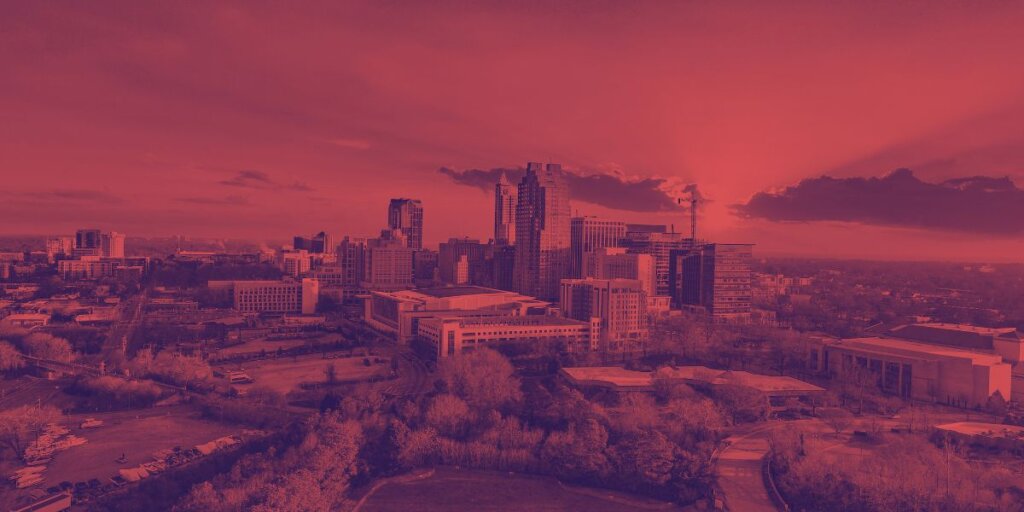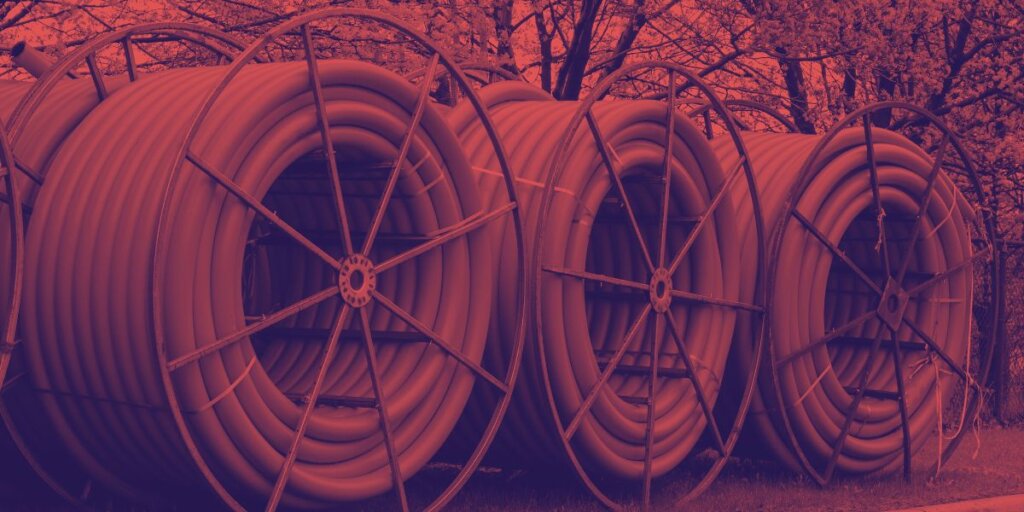Lower your internet bill
61% of people overpay for their internet.
Are you one of them?
Unlock exclusive offers in your area!
Call now
[tel]Enter zip code
1 Star is Poor & 5 Stars is Excellent.
* Required

Written by Rosslyn Elliott - Pub. Jul 19, 2024 / Updated Oct 23, 2025
Table of Contents
Are you happy with your Internet service?

About the author
Real estate sales used to be all about “location, location, location.”
Now, you’re just as likely to talk with your realtor about “internet, internet, internet.”
With 20 percent of the U.S. workforce working in remote or hybrid roles, fast home internet speeds are a must [1].
An impressive 10 percent of the workforce is fully remote, with no in-office time required. That means you can live wherever you want – as long as the internet is fast enough.
Whether you currently work remotely or onsite, it’s crucial to know how fast the internet speeds are in a state or city before you consider moving.
Speed isn’t just about bragging rights. Speed indicates what you’re going to need from the digital infrastructure that supports our economy.
Whether you can get fast internet is more important than whether you have city water or a septic tank. Fast internet can determine whether or not you have a job or educational opportunities in the future.
One popular idea on industry research sites is that fast internet can be measured by an area’s average internet speeds.
Average internet speeds do carry some value for understanding how fast internet might be in an American state or city. But it’s not as simple as lining up download speeds to pick the “fastest state.”
To truly understand the internet connectivity in any part of the U.S., you need to look at three factors:
1) the availability of high-speed connections,
2) the difference between available speeds and average speeds; and
3) the urban-rural divide in internet service.

Get the big picture on internet speeds
There is a big difference between available internet speeds and the connections people actually use.
Data from the FCC’s National Broadband Map shows that many states have high percentages of households with access to fast internet [2]. But median download speeds for those states are often lower.
For example, in Minnesota, 99% of households have access to 250 download/25 Mbps upload speeds, and 43% have access to lightning fast speeds above 1000 Mbps download/100 Mbps upload. So, you might think that an average download speed would split the difference: maybe around 350 Mbps. But the median download speed is only 183.47 Mbps.
This discrepancy highlights that availability doesn’t always translate to adoption, often due to factors like cost or lack of awareness. Just because 43% of Minnesota households have access to gigabit fiber internet doesn’t mean that they all choose a costly top-end fiber package.
According to data from research site Speedtest.com [3], the top five states with the fastest median download speeds are:
| Rank | State | Download Speed (Mbps) |
| 1 | Rhode Island | 257.48 |
| 2 | Connecticut | 244.23 |
| 3 | Florida | 238.30 |
| 4 | Delaware | 237.42 |
| 5 | New Hampshire | 234.50 |
These states represent a mix of small, densely populated areas and larger states with significant urban centers. The top four states have low percentages of rural residents.
New Hampshire, the only state in the top five with a large rural population (40%), overcomes that challenge with an impressive 65% of households having access to fiber internet. The high speeds of fiber push the average speeds for the state upward.

Rhode Island has the fastest average speeds
Fiber internet availability plays a crucial role in determining a state’s overall internet speed. States with higher percentages of households having access to fiber tend to have faster median download speeds. For instance, Connecticut, ranking second in median download speed, has 73% of households with access to fiber internet.
But a state’s internet speed is never just about one factor. Rhode Island, the state with the fastest average speed, only has 25% fiber availability. But RI benefits from its completely urban environment and its very small geographical area. Everyone in Rhode Island can get either cable or fiber internet because of their dense urban infrastructure. The lack of slow DSL or satellite speeds in the mix means that average internet speeds are much higher, even with less fiber available.
Cable internet, usually offering speeds of at least 250 download/25 upload Mbps, is widely available across the United States. Cable internet actually uses a mix of coaxial cable and fiber in its network known as HFC, which is why it is much faster than coaxial cable alone would be.
In most states, over 80% of households have access to these speeds. However, there are exceptions. West Virginia, for example, only has 68% of households with access to cable or fiber internet at these speeds. Having the lowest percentage of cable/fiber speeds in the nation is a major factor in the state’s lower median download speed of 171.87 Mbps.
The stark difference between available speeds and actual measured median speeds suggests that many households aren’t choosing the fastest available internet.
That’s only natural. Not every household needs gigabit speed internet. Even those who could afford $100/month for a gigabit plan may prefer to spend $60/month for a 200 Mbps plan.
For example, in California, 92% of households have access to 250/25 Mbps speeds, but the median download speed is 226.89 Mbps. Clearly, many households are not opting for their maximum available speed.
Many people cannot afford a fast internet plan even if they want one. Low-income families often struggle to afford home internet, so states with numerous low-income residents may see an impact to the state’s average internet speeds.

Smaller, urbanized states score high averages
Smaller, more urbanized states often have an advantage when it comes to internet speeds. States like Rhode Island, Connecticut, and Delaware, which top our list, have relatively small rural populations (9%, 12%, and 17% respectively).
States with large rural populations often struggle with slower internet speeds. Montana, for example, has a 44% rural population and ranks 49th in average download speed at 111.16 Mbps [4]. Usually, those slower speeds are reflecting the use of either DSL internet or satellite internet in rural areas.
The vast difference in internet speeds across states isn’t just about geography or population density; Some states have benefited from better leadership provided by forward-thinking, tech-savvy policymakers.
States that have invested heavily in digital infrastructure for years and have policies encouraging broadband deployment tend to have faster internet speeds.
For example, North Dakota, despite its large rural population (40%), ranks 21st in median download speed and has an impressive 81% of households with access to fiber internet due to state-level initiatives promoting broadband expansion.
North Dakota first had a statewide network in 1983 and implemented a statewide email system in 1992, putting the state on the leading edge of email deployment [5]. In 1998, they produced a statewide IT plan, and in 1999 the IT agency became a cabinet-level department.
In 2009, North Dakota used its funding from the Broadband Technology Opportunities Program to lay hundreds of miles of fiber-optic lines. In 2016, North Dakota created a state broadband program within its established IT department [6].
All these efforts led to the state pulling far ahead of similar rural states. North Dakota’s average upload speed is 68.79 Mbps, the highest in the U.S. That reflects an impressive level of fiber infrastructure, as fiber internet has much higher upload speeds than any other technology.
North Dakota’s proactive approach to technology has given its residents a significant advantage in digital opportunity compared to residents of other rural states. Leadership makes a difference.
The hows and whys of internet speeds are just as complicated on the city level.
First, remember that the fastest average speeds reflect actual usage rather than potential or available speeds. Cities may have fast internet infrastructure available, but if residents can’t or don’t subscribe to high-speed packages, the averages will be lower.
A city might show a high average speed while a significant portion of its residents lack internet access altogether. Consider what happens if the city’s wealthier residents buy high-speed internet, but the low-income residents don’t buy the lower speed plans. Bingo! High average internet speeds. But only for a certain part of the population.
Lack of access to home internet is a significant issue. In many American cities, up to 30% of households lack home internet access largely because they cannot afford it [7]. This digital divide can cause serious challenges in education, job opportunities, and access to services.
With that said, we’ll lay out the average internet speeds for the top five American cities as well as five cities that ranked much lower.
| Rank | City | Download Speed (Mbps) |
| 1 | Raleigh, NC | 289.96 |
| 2 | Chesapeake, VA | 284.75 |
| 3 | Corpus Christi, TX | 281.80 |
| 4 | Irvine, CA | 278.80 |
| 5 | Austin, TX | 273.57 |

Raleigh, NC tops average speeds
| Rank | City | Download Speed (Mbps) |
| 96 | Denver, CO | 126.63 |
| 97 | Seattle, WA | 118.33 |
| 98 | Dallas, TX | 115.99 |
| 99 | Detroit, MI | 104.79 |
| 100 | Atlanta, GA | 91.35 |
Analyzing these results reveals some interesting patterns. Many of the top-performing cities are mid-sized, tech-oriented cities or rapidly growing urban areas. Raleigh, for instance, is part of the Research Triangle, known for its concentration of tech companies and universities. Austin is also known as a major tech hub.
Some of the cities with slower speeds are larger, older urban centers [8]. Their slower speeds could be due to aging infrastructure, the challenges of upgrading systems in densely populated areas, or socioeconomic factors affecting internet adoption rates.
City size doesn’t always correlate directly with internet speed. Among the top 10 fastest cities, we see a mix of population sizes, from Chesapeake, VA (249,781 residents, ranked 90th in size) to San Antonio, TX (1,439,257 residents, ranked 7th in size).
But there does seem to be a sweet spot for internet speeds in mid-sized cities. These cities often have the resources to invest in modern infrastructure without the overwhelming complexity of upgrading systems in the largest urban areas.
The data suggests that megacities face unique challenges in maintaining and upgrading internet infrastructure. New York City, the most populous U.S. city, ranks 56th in median download speed (228.04 Mbps). Los Angeles, the second-largest city, ranks even lower at 78th (206.2 Mbps).
Several factors contribute to this delay in technology:

Building infrastructure is expensive
Fixed wireless technology could significantly alter the urban internet landscape, especially with faster speeds from 5G. Fixed wireless uses radio waves to provide internet connectivity, bypassing the need for extensive physical infrastructure like fiber-optic cables.
For big cities with infrastructure challenges, fixed wireless could offer several benefits:
Though fixed wireless shows promise, it also has limitations. It can be affected by physical obstacles and weather conditions, and its speeds won’t match the highest speeds of fiber connections. 5G fixed wireless is likely to complement rather than replace existing infrastructure in most urban areas.
As cities continue to improve their digital infrastructure, a combination of technologies – including fiber, cable, and fixed wireless – will likely be necessary to ensure fast, reliable internet access for all residents.
Internet speed depends on various factors, including the type of connection (fiber, cable, DSL, satellite, fixed wireless), network infrastructure, distance from the provider’s servers, and the number of users on the network.
Fiber-optic internet uses light to transmit data, supporting faster speeds over longer distances. Cable internet uses electrical signals over coaxial cables, though most major cable companies now use fiber for their major lines. Still, in any cable internet system, the coaxial cable sections will slow down the speed of the data, especially the upload speed.
Higher population-density areas often have better internet infrastructure due to the economics of serving more customers in a smaller area. With more competitors vying for business, the product tends to get faster and less expensive.
State policies can significantly impact internet speeds by encouraging competition among providers, investing in infrastructure, and setting goals for broadband access.
Not everyone needs the fastest internet available. Internet speeds from fiber internet are now so high that they come in multigigabit plans. Most people do not need more than 1 gigabit of download speed, and many people can easily get by with 200 Mbps depending on their internet activities.
Rural areas often face challenges in getting high-speed internet due to the high cost of infrastructure deployment over large areas. Often, rural areas won’t have wired internet options such as cable or fiber.
You can improve your internet speed by choosing a faster plan, upgrading your router, using a wired connection instead of Wi-Fi, and regularly restarting your modem and router.

5G offers more internet options
[1] NYTimes.com. “Remote Work."
[2] FCC.gov. “National Broadband Map."
[3] Speedtest.com. “Global Speed Index: United States Fixed Broadband."
[4] NationalPopularVote.com. “Rural States are Almost Entirely Ignored."
[5] NDIT.ND.gov. “About Us: History."
[6] NewAmerica.org. “How Did North Dakota Become the Crown Jewel of the Internet in the Midwest?"

About the author
Congratulations, you qualify for deals on internet plans.
Speak with our specialists to access all local discounts and limited time offers in your area.
[tel]61% of people overpay for their internet.
Are you one of them?
Unlock exclusive offers in your area!
Call now
[tel]Enter zip code